Lake Lanier is the largest lake in Georgia that has about 700 miles of shoreline and 38,000 acres of beautiful scenery. The lake serves multiple purposes, such as water supply, and flood control, and is home to many creatures that can be seen in and around the lake. At this lake, you can fish, camp, water ski, and kayak. Similar to other lakes, there are many creatures to watch out for or observe for fun! This article will list these amazing creatures that call this lake home!
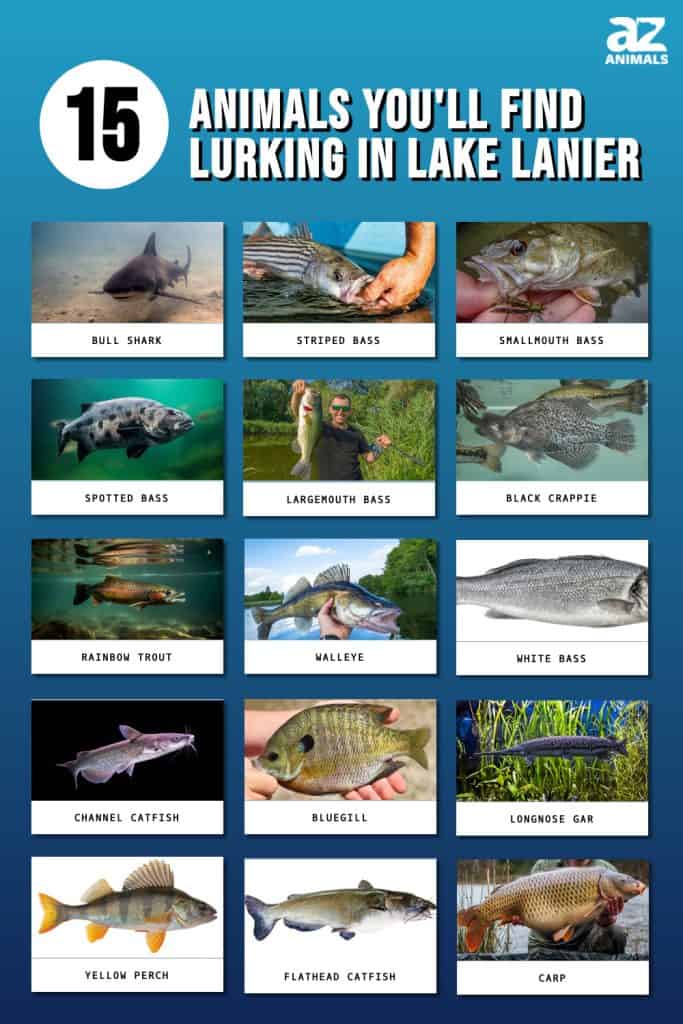
1. Bull Shark
Oddly to say, but confirmed sightings of Bull sharks have been spotted inshore and offshore of this lake’s waters. This aggressive carnivore can weigh between 200 to 500 pounds. They can be between 7 to 11.5 feet in length and live for sixteen years. If you encounter this animal in the lake, swim away slowly to avoid aggravating it.
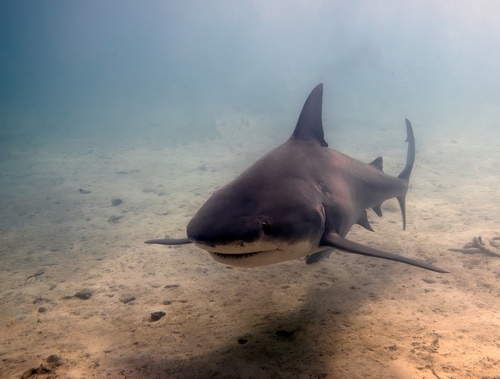
: Bull Sharks can live in saltwater and freshwater.
©Rob Atherton/Shutterstock.com
2. Striped Bass
Striped bass typically are in the ocean; however, they return to freshwaters to spawn or reproduce. These creatures can grow up to 5 feet and weigh 77 pounds. They consume insect larvae, crustaceans, and mayflies. These massive fish live up to thirty years. In late summer they tend to swim deeper in the lake due to high temperatures.
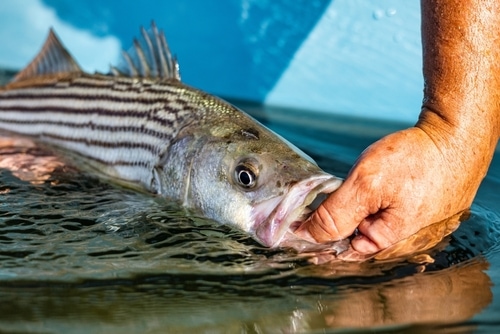
Striped Bass that are found over 30 pounds are usually females!
©Kim Miller Media/Shutterstock.com
3. Smallmouth Bass
This freshwater fish is a fighting species that can grow up to 30 inches. Their habitat can affect their weight, shape, and color. If you are lucky enough, you may be able to catch this fish at its best weight.
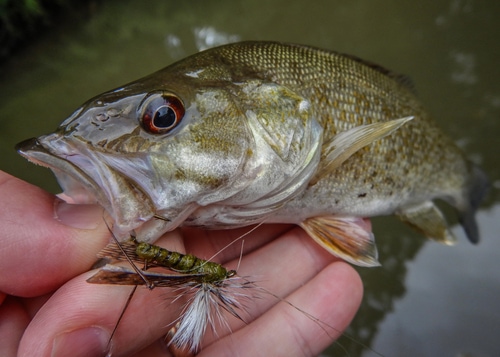
The Smallmouth Bass is also referred to as the “brown bass.”
©Brookieland/Shutterstock.com
4. Spotted Bass
The spotted bass can grow up to 24 inches and usually weigh only 2 pounds; however, the lake’s record is 8 pounds and 5 ounces. If you are hoping to catch this specific type of bass, they lurk along rocky banks or drop-offs of Lake Lanier.

The Spotted Bass like to feed on crayfish, insects, and minnows.
©Makabas/Shutterstock.com
5. Largemouth Bass
The largemouth bass has a lifespan of 10 to 16 years and can eat prey up to 35% of its body weight. This type of bass is light to dark green and can grow more than 18 inches in three years.

The largemouth bass is sometimes referred to as the “green bass.”
©FedBul/Shutterstock.com
6. Black Crappie
The Black crappie can be found lurking in shallow areas amongst bushes in Lake Lanier. These fish weigh up to 5 pounds and are 7 to 12 inches long. Female crappies can lay between 5,000 and 6,000 eggs and live up to 10 years.
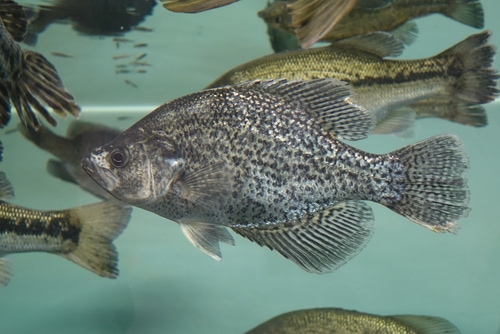
Humans tend to consume crappie for their mild and sweet taste.
©Wirestock Creators/Shutterstock.com
7. Rainbow Trout
The Rainbow trout can be captured on night crawlers, wax worms, minnows, red wigglers, and salmon eggs.
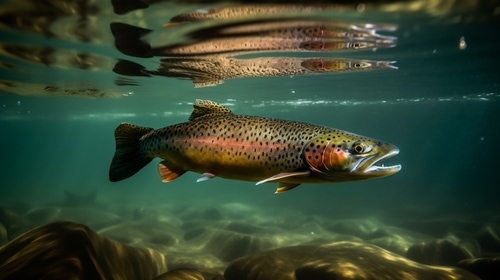
The scientific name for the Rainbow Trout is
Oncorhynchus mykiss.
©Henrik A. Jonsson/Shutterstock.com
8. Walleye
The Walleye fish can be seen swimming upstream of Lula Bridge and Lumpkin County Park between February and April. These fish swim 20 to 40 feet deep around brush piles of the lake.
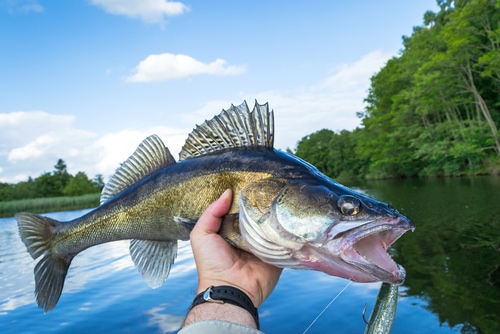
The
Walleye Fish
like minnows, leeches, and night crawlers.
©Piotr Wawrzyniuk/Shutterstock.com
9. White Bass
The White bass can grow up to 18 inches and weigh up to 2 pounds. Lake Lanier’s record is 5 pounds. You can capture this fish with live bait or minnow imitating lures.

The White bass is also the silver or sand bass.
©Nosyrevy/Shutterstock.com
10. Channel Catfish
The Georgia state record for the largest Channel catfish captured is 44 pounds and 12 ounces. This fish is attracted to smelly bait such as hotdogs and liver.

The channel catfish are bottom-feeder omnivores always looking for their next meal.
©Arunee Rodloy/Shutterstock.com
11. Bluegill
The state record for Bluegill is 3 pounds and 5 ounces. This fish is the smallest member of the sunfish.

Bluegills get their name from their blueish cheeks and gill covers.
©Stacey Ann Alberts/Shutterstock.com
12. Longnose Gar
The Longnose gar has its name because of its long, thin snout filled with needle-like teeth to capture its prey. This type of fish found in the lake can reach up to 30 pounds and reach up to 5 feet.
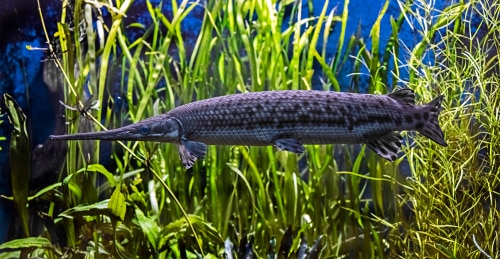
The largest Longnose gar captured in Lake Lanier weighed 30 pounds and 13 ounces.
©Mikhail Blajenov/Shutterstock.com
13. Yellow Perch
Yellow perch usually weigh between 4 to 12 ounces. They like to consume insects, flies, leeches, and minnows.

The scientific name for the yellow perch is
Perca flavescens©Edvard Ellric/Shutterstock.com
14. Flathead Catfish
The Flathead catfish can reach over 100 pounds and reach up to 4 feet. This type of catfish has a yellow coloring and only prey on live fish.
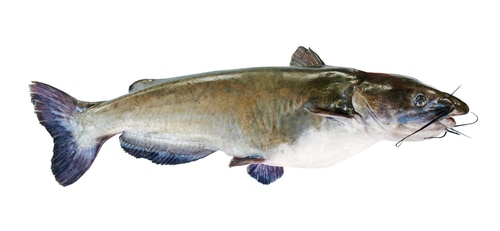
The largest Flathead catfish captured at Lake Lanier weighed 51 pounds and 10 ounces.
©Rob Hainer/Shutterstock.com
15. Carp
Carps are an oily freshwater fish in the Cyprinidae family. Carp like to eat corn, crayfish, insects, worms, and small crustaceans.

Carps have barbels around their mouth to help them search for food in murky waters.
©malgosia janicka/Shutterstock.com
If fishing for certain creatures in Lake Lanier is not an activity you care to do, observing the creatures that live around the lake is also an option as well. Many locals and tourist visit this lake for recreational or nature-watching purposes. Make sure to be on the lookout for these creatures around the lake!
- Canada geese
- Great blue herons
- Green-backed heron
- Kingfishers
- Ospreys
- Squirrels
- Rabbits
- White-tailed deer
- Wild Turkeys
Summary of 15 Animals You’ll Find Lurking in Lake Lanier
| Number | Animal | Weight |
|---|---|---|
| 1 | Bull Shark | Between 200 to 500 pounds |
| 2 | Striped Bass | Up to 77 pounds |
| 3 | Smallmouth Bass | Up to 7 pounds |
| 4 | Spotted Bass | Up to 8 pounds and 5 ounces |
| 5 | Largemouth Bass | Up to 22 pounds |
| 6 | Black Crappie | Up to 5 pounds |
| 7 | Rainbow Trout | 4 to 8 pounds |
| 8 | Walleye | 2 to 4 pounds |
| 9 | White Bass | Up to 2 pounds |
| 10 | Channel Catfish | Up to 44 pounds and 12 ounces |
| 11 | Bluegill | 3 pounds 5 ounces |
| 12 | Longnose Gar | Up to 30 pounds |
| 13 | Yellow Perch | 4 to 12 ounces |
| 14 | Flathead Catfish | Over 100 pounds |
| 15 | Carp | Up to 20 lbs |
The photo featured at the top of this post is © RodClementPhotography/Shutterstock.com
Thank you for reading! Have some feedback for us? Contact the AZ Animals editorial team.







